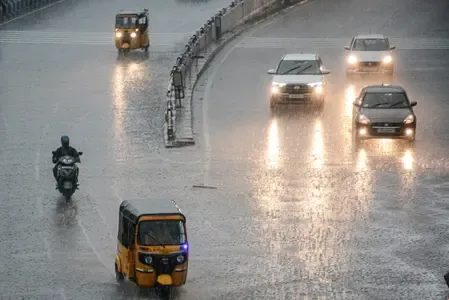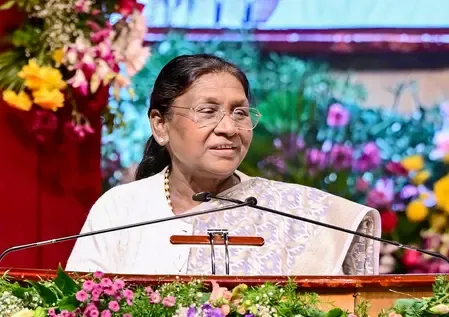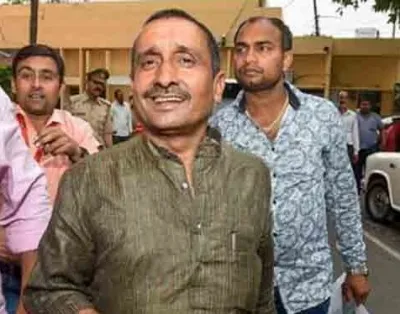Why is Gujarat Experiencing 54% Seasonal Rainfall with Notable Regional Differences?

Synopsis
Key Takeaways
- 54% of seasonal rainfall has been recorded in Gujarat.
- Jalalpore district received the highest rainfall of 5.24 inches.
- Kutch is performing better with 64% of its average rainfall.
- Some areas report satisfactory rain, while others face discrepancies.
- Historic data reveals notable rainfall variability in recent years.
Gandhinagar, July 23 (NationPress) This year, the southwest monsoon arrived in Gujarat earlier than expected, making its entrance a week ahead of schedule. However, the distribution of rainfall throughout the state has been remarkably uneven over the past six weeks.
In just the last 24 hours, rainfall was recorded in 90 talukas, with the most significant amount falling in Jalalpore (Navsari district) at 5.24 inches. Navsari city received 4.25 inches, while Mahuva in Surat and Gandevi in Navsari saw 2.20 and 2.13 inches, respectively. In total, 11 talukas experienced over 1 inch of rainfall, while 79 talukas reported less than 1 inch.
Currently, Gujarat has achieved 54 percent of its seasonal average rainfall, totaling approximately 19 inches. Nonetheless, stark regional disparities remain.
Kutch has performed slightly better with 64 percent of the average, while the central and eastern areas of Gujarat have only received 51 percent. Collectively, the 11 districts of Saurashtra have received 16 inches, accounting for 53.48 percent of the anticipated rainfall.
Bhavnagar has recorded 80 percent of its seasonal quota, whereas Patan has only managed 34 percent, revealing the significant variations in rainfall across districts. While some regions report satisfactory rainfall, several areas continue to await more consistent precipitation.
This year's monsoon made its debut in Gujarat on June 17.
From 2020 to 2023, Gujarat has experienced considerable fluctuations in monsoon rainfall. In 2020, the state recorded 1,091.7 mm, representing a 58 percent surplus over the normal level, with Kutch and Saurashtra facing particularly heavy rainfall; Devbhumi Dwarka recorded an extraordinary 2132 mm (325 percent above normal). In 2021, parts of Saurashtra suffered severe flooding in September, resulting in at least six fatalities and widespread damage to infrastructure, showcasing the adverse effects of concentrated rainfall.
The subsequent years, including 2022, experienced average to slightly below-average rainfall, though comprehensive figures are not fully available. By 2023, noticeable trends emerged: 12 of Gujarat's 33 districts reported over a 50 percent increase in seasonal rainfall compared to the 2014–2023 average, with Devbhumi Dwarka experiencing a 135 percent increase. Other regions such as Porbandar, Vadodara, Bharuch, and Tapi also saw significant gains; only Sabarkantha experienced a slight decline (5 percent).
These changing patterns highlight Gujarat's trend towards more intense and uneven monsoon seasons, characterized by dramatic excesses in some districts balanced by deficits in others, presenting both flood risks and agricultural challenges across the state.










